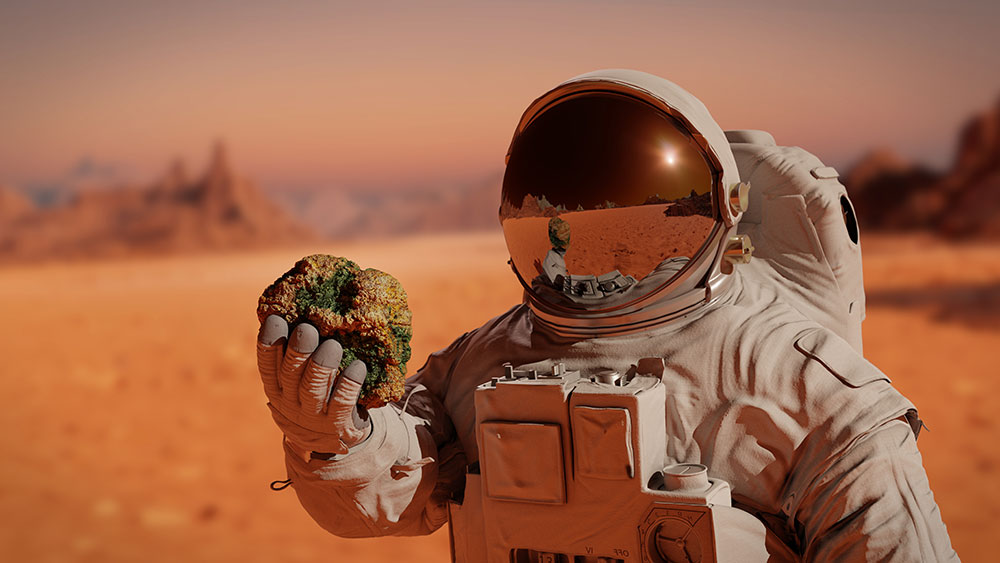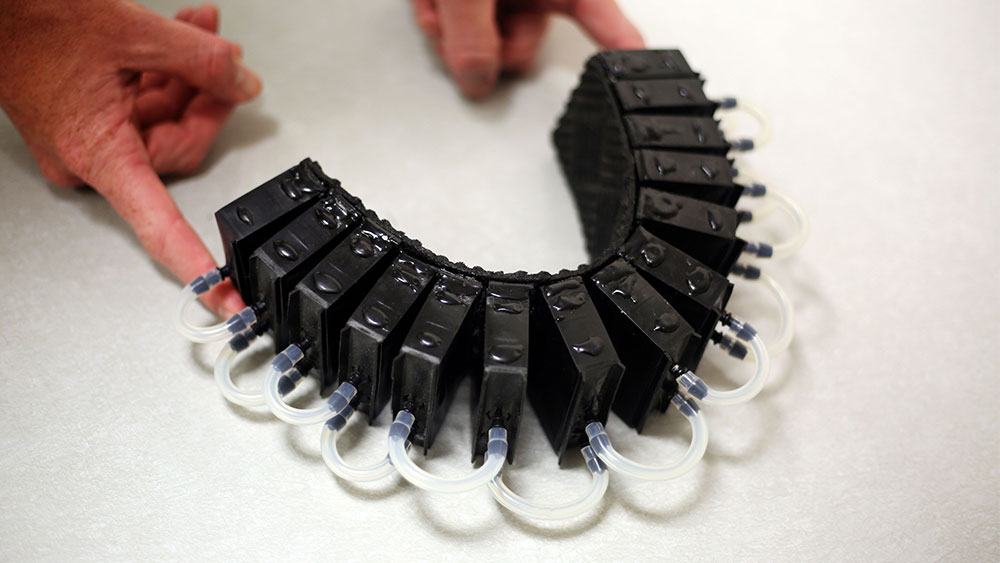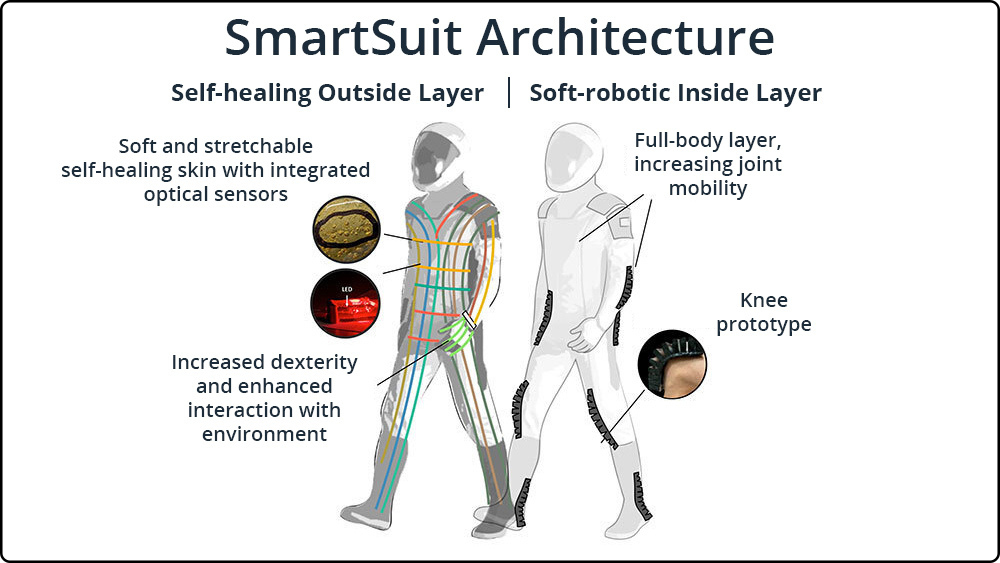
It’s been 50 years since man walked on the moon. In those 50 years, astronauts have primarily explored low Earth orbit. Now that NASA is preparing to return to the moon, it’s time to reevaluate the practicality of the spacesuit.
Dr. Ana Diaz Artiles, assistant professor in the Department of Aerospace Engineering at Texas A&M University, and graduate student Logan Kluis have been working on developments for the SmartSuit, a new spacesuit architecture that would create a safer and better spacesuit environment for Extravehicular Activity (EVA) on planetary surfaces.
The SmartSuit is a spacesuit architecture proposed by Diaz Artiles that focuses on three key improvements to the current suit design; increased mobility, enhanced safety and informed interaction between the environment and the astronaut. Most recently, Diaz Artiles and Kluis, in collaboration with Dr. Robert Shepherd, associate professor at Cornell University, have been developing prototypes of soft-robotics assistive actuators for the knee joints.
“The current spacesuit has been designed for microgravity conditions; in these conditions, astronauts don’t need to walk or move around using their lower body, they typically translate themselves using their upper body, said Diaz Artiles. “Now, when you are on a planetary surface, astronauts are going to need to walk, bend, kneel, pick rocks and many other similar activities that require a better mobility in the lower body.”
The soft-robotic knee prototypes they have developed work by using gas pressure to expand the internal chambers so that they push against each other. As each one expands, the actuator bends. And by using a soft material, the actuator forms to the human body, creating a more comfortable fit and potentially reducing the risk of injury.
“Soft-robotics would allow the actuators to conform to the astronaut’s body, greatly increasing their comfort compared to more rigid hard surface actuators,” said Kluis.

Being inside the current spacesuit is like being inside a pressurized balloon. The astronaut has to fight against the suit, which is not only difficult but expends energy that astronauts will want to conserve when conducting EVA missions. That energy spent moving against the suit contributes to the metabolic cost, which the assistive robotic actuators would be able to reduce by 15%, based on simulations specifically developed to investigate the effects of these actuators.
“If you’re out collecting samples and doing tests, you spend a lot of energy,” said Kluis. “So when we go to missions like the moon and Mars, we’re either going to have to bring all that food, or we’re going to have to grow it, so any sort of savings you can have on that energy would be very helpful.”
Their recent work focused on actuators for the knee joints, but ultimately, their objective is to integrate actuators into a full-body layer, enhancing motion in several body joints. That layer would press relatively hard against the astronaut, providing extra mechanical counterpressure (MCP), which increases mobility.
“Pressure and mobility have an inverse relationship,” said Diaz Artiles. “The more pressure you have in the spacesuit, the lower the mobility. The less pressure you have, the easier it is to move around.”
This pressure refers to the gas pressure the spacesuit provides to protect the wearer. The pressure of the atmosphere is about 14.7 pounds per square inch (psi). The current spacesuit provides about 4.3 psi, which pushes against the astronaut’s body and contributes to the balloon effect. But if a full-body soft-robotic layer could provide 1.0 psi, for example, that would lower the amount needed for the suit to only 3.3 psi: less pressure and more mobility.
“Imagine wearing a really tight Under Armour or really tight leggings. That pressure pushing down on your body would be in replace of or in addition to gas pressure,” said Kluis. “So the idea with the SmartSuit is that it would use both mechanical pressure and gas pressure.”

Another benefit to using MCP is that it could also lower the risk of decompression sickness (DCS). DCS can happen when the gas pressure surrounding us decreases relatively fast, so the nitrogen in our bodies emerge as bubbles inside our body tissues. The current solution to avoiding DCS within the spacesuit consists of breathing pure oxygen for up to four hours before conducting an EVA. By implementing MCP, astronauts can spend less time on prebreathe requirements and more time on the exploration without extra concern of DCS.
Diaz Artiles and her team continue to work on the SmartSuit architecture, and the actuator prototypes are a promising development in creating a more accommodating and resourceful spacesuit for future planetary missions. Their end goal would be for it to feel like the wearer is moving without the spacesuit on and without breaking too much of a sweat.
“Spacesuits are directly related to space travel, which is exciting, and they’re at the forefront of that,” said Kluis. “So it’s always fun getting to work on new technologies that can be implemented or be part of that evolution into the next spacesuit,”
The results of their research were published in npj Microgravity, Aerospace Medicine and Human Performance, and at the 50th International Conference of Environmental Systems.